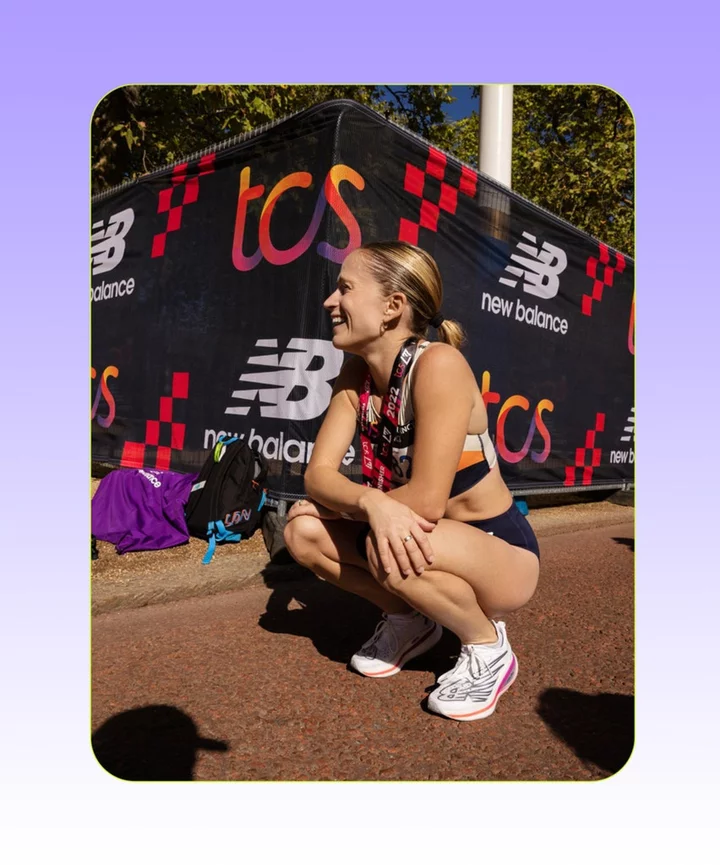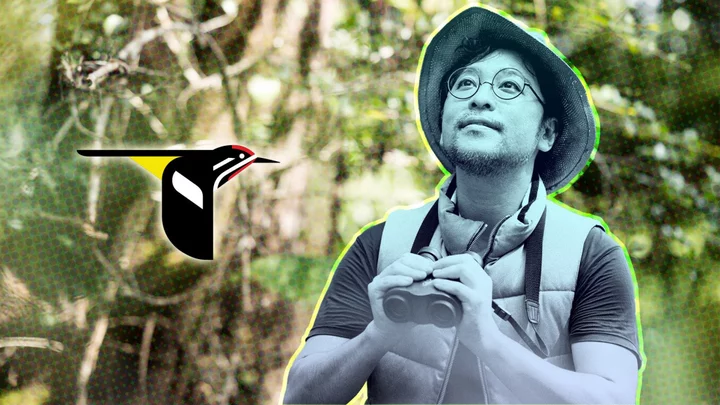Every runner’s journey is different, which is why we’ve teamed up with New Balance to share — and celebrate — their unique stories. Here, writer and runner Lee Phillips pens a heartfelt essay about navigating heartbreak and her disability. Read on to learn how she ultimately learned to appreciate movement in a whole new light.
When I think about the relationship between exercise and heartbreak, two cinematic moments come to mind: that celebrity reality TV show about revenge bods, and the Rocky training montage. The latter has nothing to do with breaking up, but both serve as reminders that half of the time we’re working out, it’s to prove something to someone…sometimes it’s ourselves — but more often than not, it’s someone else.
My own relationship to exercise, running in particular, began the same way. It was 2020, and my partner and I had just “renegotiated our boundaries” — which was really just an intellectualized way of breaking up without actually saying “breaking up” — in order to become the “best version” of ourselves. After moving through what I consider my sad girl phase, I resolved to move on and do what we had broken up to do. But in hindsight, it was a delusion.
I wasn’t interested in becoming my actual best self — I was only seeing this “self” at a superficial level. I had an idea in my head of what the perfect independent girl looked like — disciplined, healthy, and didn’t care who texted her back — and I wanted to be her. I searched “butt lift in seven days” and did three Chloe Ting workout videos in a row (and never again), then I bought expensive workout gear and committed to running routinely in the park near my house. And in my eyes, I did, in fact, get hotter.
An optimist would call this a healthy distraction, but in reality, I was still nurturing my attachment to that broken relationship by pouring all of my energy into a goal that was, ultimately, influenced by him. It was hard for me to discern how unhealthy this actually was — that is, until one day about a month later when, mid-stride, I felt myself come out of my head and into the body I was so invested in but for the wrong reasons. As I felt the grief well up in my chest, I stopped in my tracks and ugly cried. That’s when I decided to quit running altogether and finally started to grieve.
Amid processing my heartbreak, I was also struggling to come to terms with another relationship — my own, with movement. I was diagnosed with scoliosis at 14, and now at age 23, my curve — and my pain — was worsening. No longer revenge-body-focused, I finally felt ready to embark on what would be a year-long journey to find the right surgeon to correct two curves in my thoracic spine through a 10-level spinal fusion. The thought of surgery terrified me, but like my choice to abandon my fitness journey, I knew it was better to face the ugly stuff than to avoid it.
Cut to a year later, I had two titanium rods and 20 screws implanted into my spine. The hospital stay and recovery were brutal. For three months, I couldn’t move my spine in any direction or lift more than five pounds. I left NYC to move back in with my mother, and I relearned how to do everything, from getting out of bed to walking. It was from this place of vulnerability that a new relationship with movement began to take shape.
In recovery, daily walks were my only allowed exercise. At a time when I struggled to do anything on my own, each step was a triumph. I had been forced to strip down exercise to its simplest form; I walked because I had to, because it was all I could do. And I fell in love with everything that came with it: moving slowly and being outdoors. I began to see movement not as a means to an end, but as a blessing in itself. A profound joy.
In this place of stillness, I also revisited old wounds. I found that healing emotionally is a lot like healing physically — you have to take it day by day. You have to be patient with yourself, listen to yourself, and honor your needs. Before my surgery, I had never invited those things into my relationship with movement, let alone with partners.
My partner and I had gotten back together before my surgery, but that’s beside the point. My relationship with running and movement was never actually about him. At first, it was about proving that I could be someone else, someone “better,” but in recovery, it was about getting back to who I was all along and realizing I was enough.
Almost a year post-surgery, I’m now beginning a brand new journey with running. What I’m taking forward with me isn’t just a story of a girl who took movement for granted and had to lose her ability to run in order to understand its value — it’s a lot messier than that. I still struggle to remove self-criticism and shallow goals from my running practice, and every stride reminds me that my strength has not yet returned to what it was and that the full range of movement in my spine never will. But here’s what I can say: Before my surgery, getting ready to run felt like going to war with myself. Today, running is simply about putting my shoes on and going outside, like I did in those early days of recovery. It feels open and light. There is nothing I have to do but enjoy myself. That’s something I’ll carry with me forever, regardless of my relationship status.









